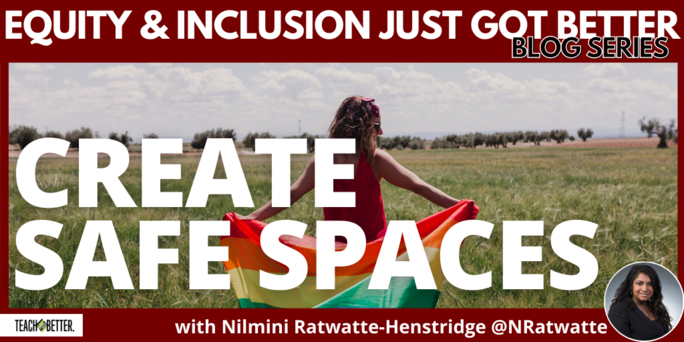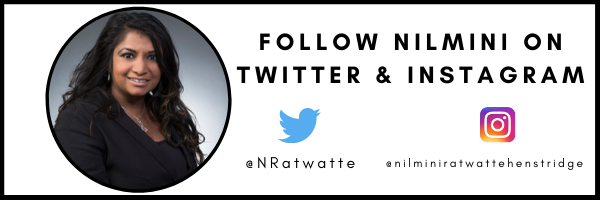TL;DR:
- We remember what is taught through stories with courageous conversations.
- Stories help us understand, connect, and give a pathway and multiple opportunities to teaching concepts. Stories resonate with us and are close to our hearts to empower our spirit when there is a safe classroom discussion space.
- Create safe spaces by incorporating storytelling, reflection, journaling, and using graphic organizers like 4 squares, Venn diagrams, and a T-charts.
“Equity and Inclusion, Just Got Better” – Journaling/Reflection Questions
- Are all of my student cultures represented in the curriculum I am teaching?
- In my classroom library, can I access a diverse representation of cultural material in the books that I use to teach with?
- Do I have a good understanding of my students and the community that I teach in?
Safe spaces can include any discussion that we have. I call them moments where we have ‘Brave Conversations.’ They seek to maintain the peace we embrace in this beautiful world we live in.
A safe space is a classroom where we all can learn and advocate for equity alongside our students. We can create these learning opportunities as sharing circles, outdoor talking circles, or online as we embed reflective classroom building tasks.
Why Create Safe Spaces?
In my journey as an educator, I have held many roles; the Anti Racism and Equity Chairperson and Human Rights Chairperson in my Teacher Federation in the Region of Peel in the province of Ontario, Canada where the two roles are the closest to my heart.
I learned how to advocate for someone else by being in another person’s “shoes” in these roles. The work that we do by creating a safe space for students in our class is invaluable and positive as we work towards a more equitable and fair society.
The small but significant ripples that teaching and learning about equity create are so very important. It makes us humans who want to learn and understand each other, and really make a change so that others also advocate and create a positive mindset as individuals.
“Let’s get comfortable, about being uncomfortable” – Dr. Sheldon L Eakins. These powerful words resonated with me.
Stories help us learn about each other, like a window into our lives as we teach about our experiences. Click To TweetCreating Safe Spaces through Storytelling
Many cultures have oral stories they pass down to the next generation to teach us about life. As we create opportunities to listen, not only do we learn but also we build relationships…lasting friendships…and become lifelong learners. For multi-language learners, it is also a way to give opportunities to speak and reflect as they learn the language.
1. Stories Teach Us About…
- World history
- The communities we teach in and their historic perspectives
- Traditions of others
- Cultural practices we follow
- Values that need to be taught to the next generation
Stories also bring us together to find things we have in common as a society. Some cultures have an oral storytelling tradition to pass down knowledge to the next generation.
I love teaching concepts through stories. The best part of my day, as an educator, is when I get to build connections with my learners through shared common story narratives that we can bring into our classroom learning space. I would say there is no better way to get to know the students than learning their stories and what they are about as you teach them!
Isn’t it just perfect knowing each generation is taught the important, the most significant, and the highlights from the generation prior?
My educational teaching style includes storytelling. I love connecting through experiences so that students can share their adventures in life. I can share my journey through storytelling that is firmly rooted and connected to the curriculum. The art of teaching through stories can vary according to each of our cultural norms historically while empowering everyone.
The art of teaching through stories can vary according to each of our cultural norms historically while empowering everyone. Click To Tweet2. Creating Inclusive and Safe Spaces Through Reflection
Research would say that you really do have to reflect on what you are learning in order to apply the knowledge. As a classroom teacher, I have the opportunity to practice with my students, run lessons by them, and see if it works. If it doesn’t work, I hear their thoughts while building relationships daily.
For educators on a learning journey: reflect. Then give it some time and reflect again. Take some time and go back to reread and consider your feelings as you read blogs.
“Keep a journal to reflect, connect, and remember the feelings that you are getting as you do equity work” – Ms. Hedreich Nichols. I agree 100% with this quote. Journaling is valuable to understand the emotions that you are feeling and to understand why you feel what you feel.
3. Creating Inclusive Environments: Practicing Through Journaling
With students, I give options of graphic organizer templates to use when we have reflective opportunities.
To organize and encourage creative thinking while journaling…
“Be the change you want to see in the world” – Mahatma Gandhi’s quote comes to mind by providing opportunities to reflect.
Graphic Organizers
I love these 3 graphic organizers. They will help you organize your thinking with your group of students.
The Four Squares Template
Use it:
- One per student for reflection (definitions, illustrate sketch notes, questions, and my reflections can be section titles)
- In a pair to switch over and write on each others
- In a group so that you switch with each question and write your idea to see perspectives and give students and in-depth understanding of student voice
Venn Diagrams
- Great to work on comparisons when working in partners
- Phenomenal for partner work so you can switch off the template and write on each others’
- Great starting point for finding things in common when working on understanding differing opinions
T-Charts
- Love this for organizing thinking
- Perfect for jotting notes and sketch notes
- Comparing ideas of two different stories on the same topic

The story being told takes you to magical places, brings about systemic changes, and engages curiosity that can be persuasive in becoming who you truly believe you are. Stories help us learn about each other, like a window into our lives as we teach about our lived experiences.
I hope this read empowered your knowledge and gave you ideas on how you can embrace culturally responsive practices. We need to educate ourselves by researching and ensuring the content we teach is accurate. To ensure that it demonstrates the truth historically, a balanced point of view, and not a biased perspective, we need to hear both sides of a situation. It is our responsibility to know the content we are teaching is correct. That’s the power of us learning together and the power of multiple points of view.
Yours in Education,
Nilmini
References:
Leading Equity Center: “Teaching Through A Culturally Diverse Lens” course. By: Dr. Sheldon L. Eakins.
Elementary Teacher Federation of Ontario (ETFO): “Leaders for Tomorrow Training”: Equity and Women’s Programming Professional Development.
Equity Discussion on 12 Hours Live Professional Development 2021 spring: Teach Better Team. Ms. Hedreich Nichols and Dr. Sheldon L. Eakins.
The Science Behind the Art of Storytelling https://www.harvardbusiness.org/the-science-behind-the-art-of-storytelling/
Ted Talk: The Danger of a Single Story
About Nilmini Ratwatte-Henstridge
Nilmini Ratwatte-Henstridge teaches in Brampton, Ontario, Canada. She was born in Sri Lanka and immigrated to Canada with her family. As an Elementary School Teacher who is passionate about Equity, Social Justice, and Human Rights in education, she enjoys teaching the younger generation to be global-minded citizens.
Discovering the world by connecting with others is an opportunity that we have today in our society today and she loves meeting new people! She is always learning while traveling to understand the inter-connectedness of this beautiful earth we live in! Nilmini LOVES cooking great meals, watching movies, and the latest fashion trends! Family and friends are close to her heart as she looks forward to balancing social media and navigating professional learning communities in education to network globally this year!



